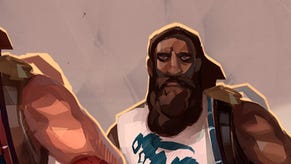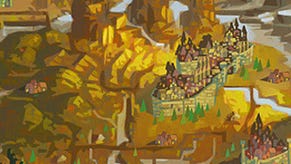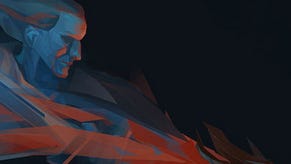Massive Chalice PC Review: A Chalice Half Full
Can Double-Fine's passion project stack up with the genre's best?
This article first appeared on USgamer, a partner publication of VG247. Some content, such as this article, has been migrated to VG247 for posterity after USgamer's closure - but it has not been edited or further vetted by the VG247 team.
Before I begin, allow me to pour one out for Kale "Chesthair" Blackbane and Tancred "Flamingo" Blackbane. They were brothers, and they fought together well until their 60s, when Chesthair succumbed to the touch of a Wrinkler and died of old age right on the battlefield. Flamingo died of heartbreak not long after. Their legacy lives on in the Blackbane family relic Shallow Grave, now in the hands of Haraldr Blackbane, who is growing up to be a fine warrior himself.
Stories like these are fewer and further between than you might suppose in Massive Chalice, the new tactical RPG by Double Fine's Brad Muir, who previously worked on the well-regarded tower defense game Iron Brigade. Warriors often appear on the scene suddenly, then die just as quickly. But despite being in the minority, characters like Chesthair and Flamingo can't help firing the imagination, even if there's little to inform their personalities outside of a handful of traits.
Drawing inspiration from XCOM and a handful of other strategy games, Massive Chalice shifts the setting from sci-fi to fantasy, with the strategy portion of the game being centered on making babies and sending them off to die. At the outset, you will be asked to pair a male and female warrior at a keep, who will dutifully begin having children and training them in their ways. Before you know it, you will have a new generation of soldiers at your command, some who take after their parents, and someone who decidedly don't (my kids are all rebels).
Massive Chalice isn't like Pokémon, where monster breeding has long since been reverse-engineered and reduced to its component parts. There's a rhyme and reason to it all, but mostly you just have to pair up a couple of good candidates who match up well and hope for the best. With that done, you then hit the play button and watch as the years fly by and your warriors become adults who have kids of their own.
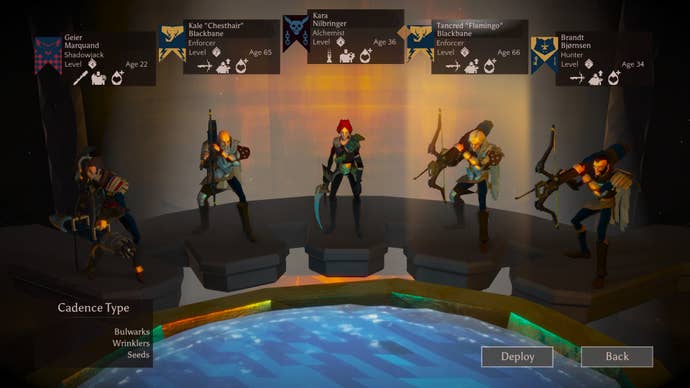
Periodically, the timeline is interrupted by attacks from creatures known as the Cadence who are attempting to overrun your kingdom. If they succeed and filling up an area's gauge, it will sink away, and you will have one less place to build (if you're really unlucky, you'll lose a keep along with it). You can choose where to engage them, at which point five warriors of your choosing will be sent out to meet them on the battlefield.
The combat mechanics should be familiar for anyone who has played a game like XCOM. Characters have distinct attack and movement ranges, forcing you to decide whether you want to attack or move as far as possible. There's a cover system of sorts with the stealth ability, and walls make for convenient protection. There's no overwatch system, in which characters will fire on moving enemies within range, but I'm actually sort of fine with that. Overwatch mechanics always seem to end up dominating the strategy, and I'd much rather focus on individual character abilities, which grow in importance as you unlock explosive shots, knockback attacks, and other useful skills.
The maps are all randomly-generated, which can be good and bad in its own way. The enemy and obstacle placement is generally intelligent, and it keeps battles from becoming overly repetitive. There was only one occasion where I felt like a bad dice roll left unable to win, with my five decent but unremarkable warriors left to face hordes of Cradles — creatures that launch minions that slowly but surely overrun the map. After a while I just had to give up and admit to defeat, leaving my party to succumb waves of Seeds and Ruptures.
Thankfully, such disasters aren't crippling in Massive Chalice. Though it left me with a thin pool of heroes, I was able to repopulate my ranks with even better warriors in relatively short order, and the unfortunate massacre became only a dark footnote in my kingdom's history. While this approach has the unfortunate side effect of reducing heroes to something approaching cannon fodder, it also makes it easier to engage with its permadeath mechanic rather than just shrugging and reloading, which is the norm in most other games of this type.
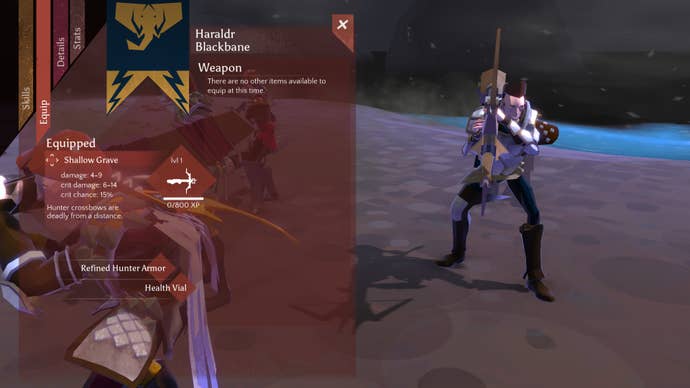
Unfortunately, history is a weakness for Massive Chalice in other ways. While I've waxed on about the feats of Flamingo and Chesthair, Massive Chalice does a comparatively poor job of recording them for posterity. You'd think a Hall of Fame for great heroes would be a given, but the best you can do is scroll through a lengthy list of the deceased or try to navigate the snippets of family tree in each character profile. It's in such features that truly emergent storytelling is born, and Massive Chalice doesn't have enough of it.
There are a number of other ways in which Massive Chalice comes off as undercooked, which suggests that Double Fine had an ambitious vision for a strategy game that they didn't quite have the resources to pull off. Consider, for example, that while it's possible to create hybrid classes from the base melee, archer, and alchemist classes, including "Trickshots" who can fire explosive arrows and "Shadowjacks" who have the power of stealth, they all have the same basic body types as the beginning classes, which hurts the sense of progression. Art assets take time and effort to create, but the lack of visual diversity is glaring in Massive Chalice, even if the hybrid classes partly make up for the fact that it should really have one more class type, preferably a rogue or dual-wielding swordmaster of some sort.
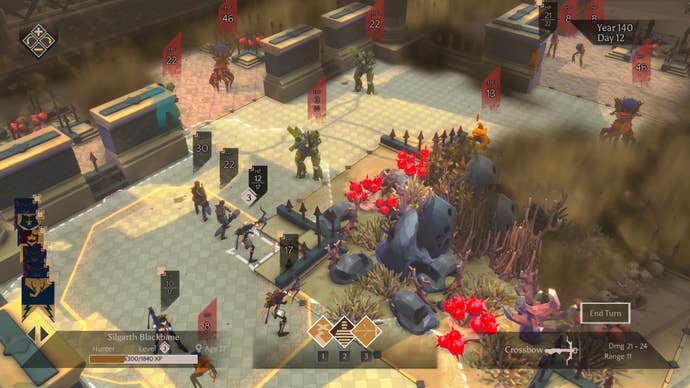
Having said that, Massive Chalice has grown on me. I was initially quite disappointed by the seeming lack of classes, and it took some time to learn how to grapple with the rather messy user interface; but once I settled in, I found a reasonably deep tactical RPG that kept me wanting to press the "play button" and fast-forward another dozen years or more. I've enjoyed uncovering hybrid classes, researching useful items, navigating story events (oh no, the regents hate one another! Time for marriage counseling!), and ultimately facing down the Cadence on the battlefield. There's a pleasant rhythm to it all that feels engaging without being overwhelming.
What Massive Chalice needs most is more. It needs a better way to catalogue the history of your heroes, it needs more buildings, it needs more character classes and equipment art, and it needs more crafted story events that can serve as key markers on the timeline. I don't know if it'll ever happen, but this game is crying out for an expansion.
As it is, Massive Chalice is a charming take on the genre that XCOM built, with a tongue-in-cheek sense of humor and just enough depth to keep you playing. So give it a shot. If nothing else, it'll be enough to hold you over to XCOM 2... or a possible expansion. One can only hope. I miss Flamingo and Chesthair already.
InterfaceTons of layered menus mean that key elements like equipment and skill trees can sometimes get obscured. Otherwise, it's easy enough to navigate once you get used to it.
Lasting AppealI've really enjoyed my run through Massive Chalice, but there's not quite enough in the way of content to make me want to take a second pass. That'll change if we eventually get an expansion.
SoundThe soundtrack is understated but effective, with resonant cues accompanying key moments like the defeat of an enemy.
VisualsThe art can be a little confusing at first, with characters frequently blending into the terrain and enemies who look almost a little too simple. After you get used to it though, the art adds to the game's charm, helping to make up for the lack of high production values.
ConclusionMassive Chalice's generational loop makes for a strong core, and elements like the hybrid classes lend it some much-needed depth. However, it doesn't do a great job of tracking the history of your heroes, and it's ultimately lacking in elements like diverse character art and base classes. Still, there's the foundation for a phenomenal strategy game here if Double Fine is willing to build on it. As it is, though, it makes for a diverting few hours, and a welcome change of pace from XCOM.


